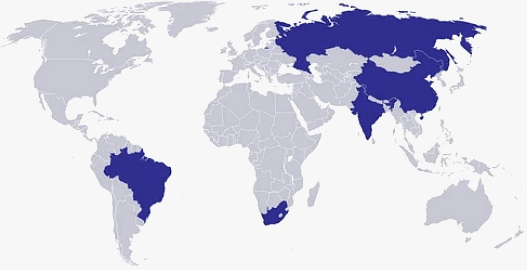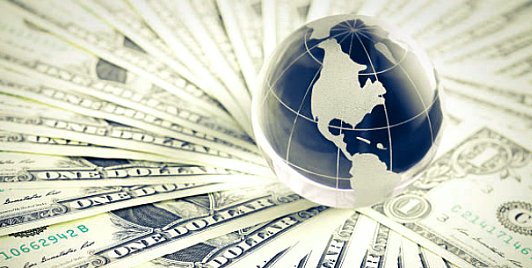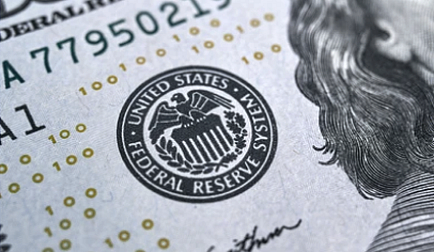Accredited InvestorsAltcoinAnatoli UnitskyAnti-Money Laundering (AML) In CryptoAPIArbitrageArtCoin TokenArticle DirectoryASICAuction Terminology GlossaryBasics of Stock Market InvestingBear MarketBest Crypto Payment Provider In the WorldBitcoinBlockchainBlockchain ConfirmationBlockchain Consensus MechanismBlockchain ForkBlockchain GlossaryBored Ape Yacht ClubBuild a Business That OutperformsBull MarketBuying SkyWay SharesByzantine Fault Tolerance (BFT) ExplainedCasascius CoinCentral Bank Digital Currency (CBDC)Centralized Crypto ExchangeCoinCoinsetCold WalletCollateralCommodity Futures Trading Commission (CFTC)Cross-Chain TechnologyCRUCrypto ExchangeCrypto GlossaryCrypto JokesCrypto Terms to KnowCrypto TickerCryptocurrencyCryptographyCryptojackingCryptounit BlockchainCryptounit GlossaryCryptounit ProgramdApp (Decentralized Application)Dead CoinDecentralized Exchange (DEX)Decentralized Finance (DeFi)Difference Between Bitcoin and EthereumDifferent Ways of Investing MoneyDigital CurrencyDistributed LedgerDo Your Own Research (DYOR)Dollar Cost Averaging (DCA)Dow Jones Industrial Average (DJIA)EncryptionERC-20ERC-721EthereumEvoScentFear Of Missing Out (FOMO)Fear, Uncertainty and Doubt (FUD)Fiat MoneyFNT Fintech CompanyGenesis BlockGlobal Unit PayGlossary of Banking TermsGlossary of Business TermsGlossary of Financial TermsHalvingHODLHot WalletHow Do I Start InvestingHow Rich is Satoshi Nakamoto?How to Create a BlockchainHow to Find Private InvestorsHow to Get Into FintechHow to Program Smart ContractsI Am Thrilled to Be a Part of This Global ProjectInitial Coin Offering (ICO)Initial Public Offering (IPO)Initial Token Offering (ITO)Innovation Basalt TechnologyInnovative Transportation TechnologiesInternational Bank Account Number (IBAN)Investing in Gold Mining StocksInvesting in Gold MiningJagerJoy of Missing Out (JOMO)Know Your Customer (KYC)LedgerLiquidity in CryptocurrencyMaker and Taker Fees in Crypto TradingMarket Capitalization (Market Cap)Meme CoinMetal Credit CardMetaMaskMillenials Now Have Access to Generational WealthMy Best Investment EverNew Digital EvolutionNFT GlossaryOff-Chain TransactionsOn-Chain TransactionsOpen Edition NFTPeer-to-Peer (P2P)Personal Loan GlossaryProbably the Best STO on the MarketProof of Stake (PoS)Real Estate Glossary of TermsReal Estate Investing GlossaryRebase TokenSecurities and Exchange Commission (SEC)Security Token ExchangesSecurity Token Offering (STO)Soulbound Decentralized Identities for Security TokensSoulbound ID Launch by Stobox Proves a SuccessSoulbound TokensStoboxStock Market GlossaryTestimonialsTether Platform and Token (USDT)UnitEx ExchangeUnitsky String TechnologiesUNTBUSDUValidatorWe Started Investing When We Were 25What are Blue Chip NFT?What are Blue Chip Stocks?What are Crypto Assets?What are Crypto Smart Contracts?What are CryptoPunks NFT?What are Digital Assets?What are Digital Collectibles?What are Gas Fees?What are Gas Wars?What are Hashmasks?What are Non Fungible Tokens?What are Non-Sufficient Funds (NSF)?What are Soulbound Tokens (SBT)?What are Stablecoins in Crypto?What are Transactions Per Second (TPS)?What are Utility NFTs?What are Utility Tokens?What Does Burning Crypto Mean?What Does Diamond Hands Mean?What Does Paper Hands Mean?What Does To The Moon Mean?What Does WAGMI Mean?What Happened to Satoshi Nakamoto?What is a 51% Attack?What is a Baby Boomer?What is a Backlink?What is a Banner?What is a Barcode?What is a Bid-Ask Spread in Crypto?What is a Block in Blockchain?What is a Block Reward?What is a Blockchain Address?What is a Blockchain Node?What is a Blockchain Oracle?What is a Blog?What is a Bond?What is a Bot?What is a Broker?What is a Business Accelerator?What is a Cash Cow?What is a Commercial Bank?What is a Commodity?What is a Con?What is a Credit?What is a Credit Limit?What is a Credit Rating?What is a Crypto Airdrop?What is a Crypto Bridge?What is a Crypto Scam?What is a Crypto Token?What is a Crypto Wallet?What is a Crypto Whale?What is a Crypto Winter?What is a Cryptocurrency Public Ledger?What is a Cryptocurrency Roadmap?What is a DAO?What is a Dark Pool?What is a Day Trader?What is a Dead Cat Bounce?What is a Default?What is a Derivative?What is a Digital Credit Card?What is a Fiscal Quarter?What is a Fungible Token?What is a Governance Token?What is a Grace Period?What is a Hard Fork?What is a Hot Wallet?What is a Hybrid Blockchain?What is a Hybrid PoW/PoS?What is a Joint Account?What is a Market Cap?What is a Merkle Tree in Blockchain?What is a Mining Farm?What is a Nonce? What is a PFP NFT?What is a POS System?What is a Prepaid Card?What is a Private Blockchain?What is a Private Key?What is a Public Blockchain?What is a Public Key?What is a Reserve Currency?What is a Ring Signature?What is a Routing Number?What is a Rug Pull in Crypto?What is a Safe Deposit Box?What is a Satoshi?What is a Security Token?What is a Seed Phrase?What is a Shitcoin?What is a Sidechain?What is a Soft Fork?What is a Spot Market?What is a State Bank?What is a SWIFT Code?What is a Tax Identification Number (TIN)?What is a Time Deposit?What is a Transaction Account?What is a Variable Interest Rate?What is a Virtual Assistant (VA)?What is a Virtual Card?What is a Virtual Currency?What is a Visa Card?What is a Whitelist in Crypto?What is a Whitepaper?What is Accounts Payable (AP)?What is AMA in Crypto?What is Amortization?What is an Accrual?What is an ACH Transfer?What is an Actuary?What is an Addendum?What is an Algorithm?What is an Angel Investor?What is an Annuity?What is an Asset?What is an ATM?What is an Atomic Swap?What is an Audit?What is an Avatar?What is an EIN?What is an Embargo?What is an Entrepreneur?What is an IDO (Initial Dex Offering)?What is an Interest Rate?What is an Internet cookie?What is an Investment Bank?What is an NFT Drop?What is an NFT Floor Price?What is an Ommer Block?What is an Orphan Block?What is an Outstanding Check?What is an Overdraft?What is Artificial Intelligence (AI)?What is B2B (Business-to-Business)?What is B2G (Business-to-Government)?What is Bartering?What is Bitcoin Dominance?What is Bitcoin Pizza Day?What is Blockchain Immutability?What is Blockchain Used For?What is BRICS?What is Business-to-Consumer (B2C)?What is C2C (Customer to Customer)?What is Capitalism?What is Catfishing?What is CFD Trading?What is Check Kiting?What is Cloud Mining?What is Communism?What is Content Marketing?What is Decentralization in Blockchain?What is DeFi in Crypto?What is Delisting?What is Depreciation?What is Digital Marketing?What is Diversification?What is Double Spending?What is Dumb Money?What is Dumping?What is Earnings Per Share (EPS)?What is Economics?What is Email Marketing?What is Equity?What is Etherscan?What is Fintech?What is Foreign currency?What is Forex?What is Fundamental Analysis (FA)?What is GameFi?What is Generative Art NFT?What is Gwei?What is Hard Currency?What is Hash Rate?What is Hashing in Blockchain?What is Inflation?What is Initial Game Offering (IGO)?What is Interest?What is Interest Income?What is Mainnet?What is Mastercard?What is Metaverse in Crypto?What is Mining in Cryptocurrency?What is Minting NFT?What is Mobile Banking?What is Money Laundering?What is NFT Alpha?What is NFT Metadata?What is NFT Rarity?What is NGMI Meaning?What is Nominal Interest Rate?What is Online Banking?What is Open-End Credit?What is OpenSea NFT Marketplace?What is Personal Identification Number (PIN)?What is Play-to-Earn?What is Polygon?What is Proof of Authority (PoA)?What is Proof of Work (PoW)?What is Public Key Cryptography?What is Pump and Dump?What is Quantum Computing?What is Refinancing?What is Retail Banking?What is Ripple?What is Sharding?What is Slippage in Crypto?What is Smart Money?What is Solvency?What is Soulbound ID?What is SSL?What is Staking in Cryptocurrency?What is Technical Analysis (TA)?What is Testnet?What is the Ask Price?What is the Better Business Bureau (BBB)?What is the Bid Price?What is the Dark Web?What is the InterPlanetary File System (IPFS)?What is the Gold Standard?What is the Lightning Network?What is the Prime Rate?What is the Sandbox?What is the Secondary Market?What is the World Bank?What is Tier 1 Capital?What is Tokenomics?What is TRC-20?What is Universal Banking?What is Unspent Transaction Output (UTXO)?What is Usury?What is Volatility in Crypto?What is Wash Trading?What is Web3?What is Whisper?What is XRP?What is Zero-Knowledge Proof (ZKP)?Who is Beeple?Who is Satoshi Nakamoto?Who is Vitalik Buterin?Why Tokenization is a Safe HavenWhy You Should Try Your Hand at Trading
What is BRICS?
- Home
- Glossary of Business Terms
- What is BRICS?
The objective of the BRICS alliance is to encourage proactive, incremental, transparent, and open cooperation and dialogue among its member nations.

The primary aim is to create a peaceful and harmonious world that fosters common prosperity and serves the interests of all its people and nations.
What is BRICS?
BRICS is an acronym that represents five emerging economies: Brazil, Russia, India, China, and South Africa. These countries are viewed as a collective force that is challenging the global dominance of traditional economic powers such as the United States, Europe, and Japan.
The Origins of BRICS
The term BRICS was coined in 2001 by Jim O'Neill, an economist at Goldman Sachs. Initially, the acronym represented only four countries: Brazil, Russia, India, and China. O'Neill suggested that these four countries had the potential to become the most dominant global economic powers by the year 2050. He argued that their large and growing populations, natural resources, and economic potential made them a formidable force to be reckoned with.
In 2010, South Africa was added to the BRIC grouping, and the acronym was changed to BRICS. This move was prompted by South Africa's relatively large economy and its increasing importance in the African continent. Today, the BRICS countries represent about 42% of the world's population, 23% of global GDP, and 30% of the world's territory.
The BRICS Countries
Brazil: Brazil is the largest country in South America and the fifth largest country in the world by land area. It has a population of approximately 213 million people, making it the sixth most populous country in the world. Brazil is known for its abundant natural resources, including minerals, oil, and agricultural products. It is also one of the world's largest producers of coffee, soybeans, and beef.
Russia: Russia is the largest country in the world by land area, spanning two continents: Europe and Asia. It has a population of approximately 144 million people. Russia is known for its vast reserves of natural resources, including oil, natural gas, and minerals. It is also a major exporter of arms, military equipment, and nuclear technology.
India: India is the world's second most populous country, with over 1.3 billion people. It is also the world's seventh largest country by land area. India is known for its information technology industry, which has emerged as a global leader in recent years. It is also a major producer of textiles, agricultural products, and pharmaceuticals.
China: China is the world's most populous country, with over 1.4 billion people. It is the world's second-largest economy, and it is expected to overtake the United States as the world's largest economy in the coming years. China is known for its manufacturing industry, which has grown rapidly over the past few decades. It is also a major producer of steel, textiles, and electronics.
South Africa: South Africa is the southernmost country on the African continent, with a population of approximately 60 million people. It is known for its abundant mineral resources, including gold, diamonds, and platinum. It is also a major producer of wine and agricultural products.
The BRICS Summit
The BRICS countries hold an annual summit to discuss issues of mutual interest, including economic development, trade, and political cooperation. The first BRICS summit was held in 2009 in Russia, and since then, the summits have been held in Brazil, China, India, and South Africa.
At the summits, the leaders of the BRICS countries discuss ways to enhance their economic and political cooperation. They also discuss issues related to global governance and the reform of international institutions such as the United Nations and the World Trade Organization.
The New Development Bank
The New Development Bank (NDB) was established in 2014 and is headquartered in Shanghai, China. It was created as an alternative to the existing global financial institutions such as the World Bank and the International Monetary Fund (IMF), which are dominated by Western countries.
The NDB is a multilateral development bank that aims to support infrastructure and sustainable development projects in the BRICS countries and other developing nations. It provides loans and other forms of financial assistance for projects that promote sustainable development, such as renewable energy, transportation, and telecommunications.
The NDB is capitalized with an initial investment of $50 billion, with each of the BRICS countries contributing an equal share. Since its inception, the NDB has approved loans worth over $30 billion for projects in member countries and beyond.
In addition to the establishment of the New Development Bank, the BRICS nations created a liquidity mechanism known as the Contingent Reserve Arrangement. This mechanism provides support to member countries that are experiencing payment difficulties. The Contingent Reserve Arrangement functions as a kind of insurance policy for member countries, allowing them to access funds quickly in the event of a balance of payments crisis.
Related Articles

What is the World Bank?
Critics of the World Bank argue that its lending practices have sometimes been ineffective or even harmful, and that it has focused too much on...

What is a Reserve Currency?
In addition to the U.S. dollar, the International Monetary Fund (IMF) tracks several other currencies that are used as reserve currencies by countries around the world.
- Home
- Glossary of Business Terms
- What is BRICS?